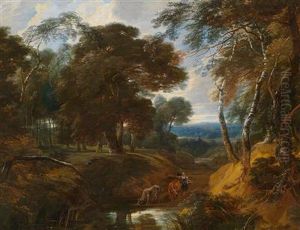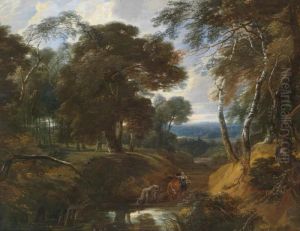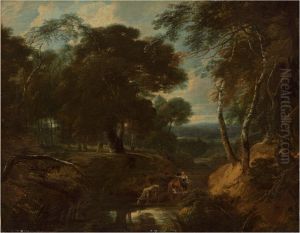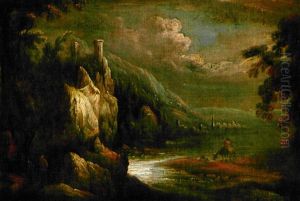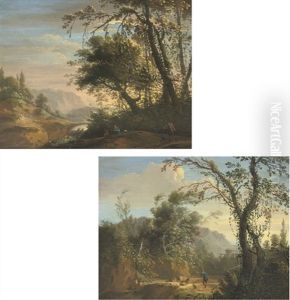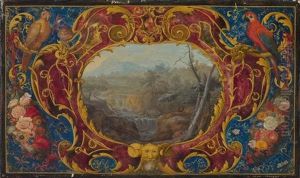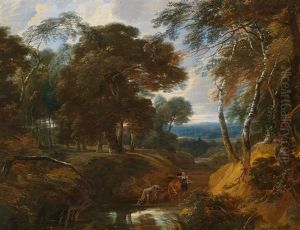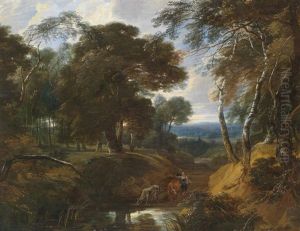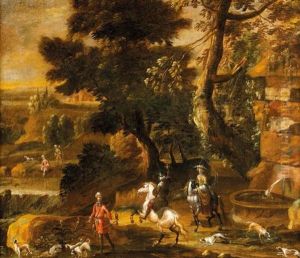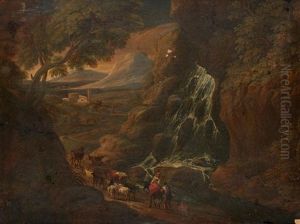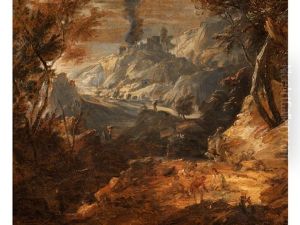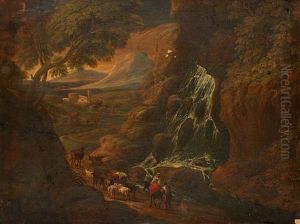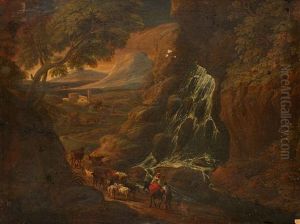Philips Augustyn Immenraet Paintings
Philips Augustyn Immenraet was a notable figure in the world of 17th-century European art, particularly within the Flemish Baroque tradition. Born in 1627 in Antwerp, a city that was a significant hub for artistic production and innovation during the Baroque period, Immenraet's contributions to art were primarily in the realm of landscape painting, a genre that flourished during his lifetime. His works are characterized by their meticulous attention to detail, vibrant depiction of natural scenes, and the dynamic interplay of light and shadow, elements that are emblematic of the Baroque style.
Despite the overshadowing fame of contemporaries like Peter Paul Rubens and Anthony van Dyck, Immenraet carved a niche for himself with his distinctive approach to landscape art. He was particularly adept at capturing the serene beauty of the countryside, often incorporating pastoral elements and figures to create scenes that were both idyllic and richly narrative. His paintings often featured the lush, rolling landscapes of the Southern Netherlands and sometimes included mythological or biblical themes, subtly woven into the natural settings.
Immenraet's career was marked by a successful period in Antwerp where he was a part of the vibrant artistic community. However, like many artists of his time, his work was not limited to his homeland. The cultural exchange between various European art centers allowed his style to evolve, reflecting influences from Italian and Dutch landscape traditions. This blend of influences helped him develop a versatile style that appealed to a wide audience, including patrons beyond the Flemish borders.
He died in 1679, leaving behind a legacy that, while not as widely recognized as some of his contemporaries, represents an important contribution to the Flemish Baroque movement. Immenraet's works continue to be appreciated for their beauty and technical skill, and they offer a window into the landscape genre's evolution during one of the most vibrant periods in European art history. His paintings are preserved in various museums and collections worldwide, where they continue to be studied and admired for their artistic and historical value.
